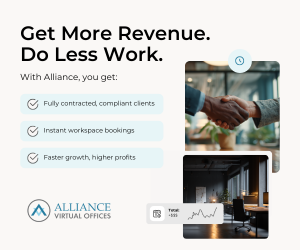- CEOs continue to link physical presence with productivity, despite mounting evidence to the contrary.
- More tenured, male CEOs, are more likely to mandate in-office work — it may take a generational shift before such approaches become the norm.
- Companies under pressure from retail investors might be more inclined to mandate in-office attendance to project an image of productivity — even if such measures undermine employee morale and engagement.
The debate around hybrid and remote work continues to evolve. While some leaders advocate for a return to traditional office models, others embrace flexibility, driven by both evidence and experience.
Nuno Gonçalves, Head of Workforce Strategy at Reejig and former HR executive in iconic brands like Nike, Mars and Sanofi offers a wealth of insight into this pressing issue in an interview with me.
Gonçalves emphasizes a crucial message: decisions about hybrid work must be grounded in peer-reviewed research, not outdated assumptions or untested beliefs.
The Tension Between Perception and Reality
Gonçalves’s perspective is shaped by hands-on experience managing talent in diverse settings, from pharmaceuticals to global consumer brands; he observed shifts from hybrid models to 4 or 5 days in the office — a change driven by organizational pressures rather than evidence of improved outcomes.
Research “indicates that forcing employees back into offices has little to no impact on future profitability or stock performance,” Gonçalves notes.
Indeed, research has consistently shown that blanket mandates to return to the office often harm employee engagement and retention.
Yet many CEOs continue to link physical presence with productivity, despite mounting evidence to the contrary. This disconnect, Gonçalves suggests, often stems from a reliance on personal intuition rather than data.
“When leaders feel pressured, they revert to familiar patterns, equating face-to-face time with results,” he explains.
The Role of Leadership and Organizational Culture
The inclination to mandate in-office work is particularly prevalent among companies led by older, male CEOs — a demographic that dominates corporate leadership today.
Gonçalves cites a study highlighting how such mandates often align with outdated perceptions, reflecting a lack of psychological safety and cultural maturity within some organizations.
“Younger and more diverse leaders tend to approach work differently,” he says. “They are more likely to challenge the status quo and make decisions informed by robust research.”
These statements are backed up by a recent study that suggests that more tenured, male CEOs, a demographic that still dominates corporate leadership today, are more likely to mandate in-office work — it may take a generational shift before such approaches become the norm, says Gonçalves.
In the meantime, he stresses the importance of fostering a culture that values trust and evidence-based decision-making.
“Organizations need to recognize that culture isn’t about replicating past success but adapting to new realities,” he asserts.
A distributed workforce model, when implemented thoughtfully, can enhance access to global talent, boost innovation, and increase organizational resilience.
Investor Influence and the Bottom Line
Another significant factor in the hybrid work debate is the influence of investors.
Gonçalves observes a stark contrast between companies with significant institutional investor ownership and those owned primarily by retail investors, based on research.
“Large institutional investors tend to prioritize data and long-term value creation,” he explains, “whereas smaller retail investors may be more susceptible to CEO narratives blaming poor performance on remote work.”
This dynamic has practical implications for how organizations approach hybrid work policies.
For instance, companies under pressure from retail investors might be more inclined to mandate in-office attendance to project an image of productivity — even if such measures undermine employee morale and engagement.
The Future of Hybrid Work
Looking ahead, Gonçalves is optimistic about the enduring role of hybrid work.
“All credible studies — from Harvard to Stanford — confirm that hybrid models are here to stay,” he says.
He envisions a future where technology and artificial intelligence (AI) further support distributed work by automating routine tasks, allowing employees to focus on creative and strategic contributions.
This evolution, however, requires a shift in how organizations view the purpose of in-person collaboration.
Gonçalves advocates for “purposeful gatherings,” where teams come together to align on strategy, resolve conflicts, and build relationships — not merely to clock in hours.
“Being in the office doesn’t automatically lead to meaningful connections,” he asserts. “We need to rethink when and why we gather, ensuring those moments are intentional and impactful.” Research backs up his claims.
Building the Case for Evidence-Based Policies
Ultimately, Gonçalves believes that peer-reviewed research should guide decisions about hybrid work. He underscores the importance of using data to challenge long-held beliefs and biases, particularly as younger, more diverse leaders rise through the ranks.
“Organizations that embrace evidence-based practices will be better positioned to attract top talent, drive innovation, and deliver sustainable results,” he concludes.
By aligning policies with research, companies can move beyond reactive decision-making and build workplace models that work for both employees and the bottom line.
As Gonçalves’s experience demonstrates, the path forward requires courage, curiosity, and a commitment to change.
For leaders willing to embrace these qualities, the benefits of hybrid work are clear — and the opportunities are endless.


 Dr. Gleb Tsipursky – The Office Whisperer
Dr. Gleb Tsipursky – The Office Whisperer Nirit Cohen – WorkFutures
Nirit Cohen – WorkFutures Angela Howard – Culture Expert
Angela Howard – Culture Expert Drew Jones – Design & Innovation
Drew Jones – Design & Innovation Jonathan Price – CRE & Flex Expert
Jonathan Price – CRE & Flex Expert














